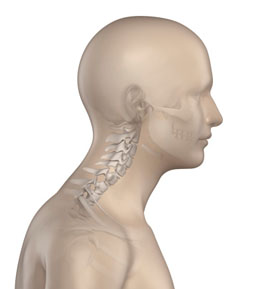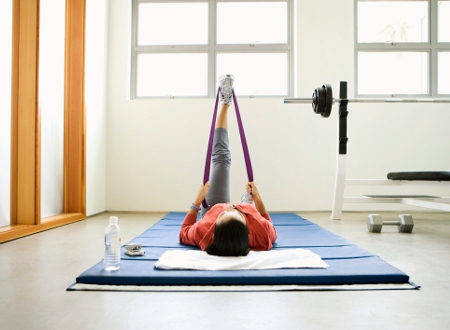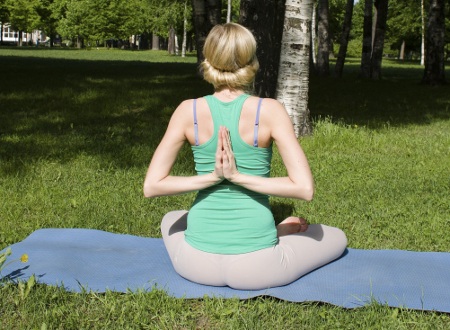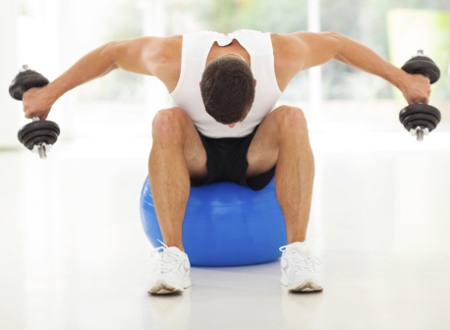Kyphosis is a deformity characterized by the rounding of the upper back. Since kyphosis exercises can help a lot in overcoming this deformity, read on to acquaint yourself with some effective exercises.

Kyphosis or commonly known as 'hunch back' is basically rounding of the back usually in the mid thoracic area of the spine and sometimes in the neck also. This deformity can either be the result of degenerative diseases (like arthritis), developmental problems, osteoporosis, injury, trauma, or prolonged sitting in one place. It mainly develops in people having weak abdominal muscles and tight hamstrings at the back of the legs, resulting in bad body posture, mild back pain, stiffness or tenderness in the spine, muscle fatigue, and slouching. Though there are different methods of treating kyphosis like medications and even surgery, one of the safest ways to treat this deformity is through exercises. Kyphosis treatment exercises work by stretching the stiff areas like the chest and hamstrings and strengthening the weak areas like the upper back and abdominal region.
Exercises for Postural Kyphosis
Postural kyphosis is one of the most minor type of kyphosis that develops during adolescence. Here are some strengthening exercises focusing on the posture muscles of the trapezius and rhomboids.
►
Shoulder Blade Squeeze
For this exercise, you need to sit on a stool and tuck your chin to the chest. Now, keeping your chest high, draw your shoulder blades together and hold for a couple of seconds and repeat. Or you could sit with your hands folded behind your back, such that the shoulder blades are brought together and get the needed stretch.
►
Hamstring Stretch
To perform this exercise, lie on your back with a rope or band wrapped around one foot and the other leg stretched and anchored to the mat. Hold the ends of the band or rope in your hands. Then, extend your one leg straight up in the air, ensuring to straighten your knee. Remain in this position for a couple of seconds until you feel a pull in the back of the upper thigh. Thereafter, release to the floor again and repeat it with the other leg.
►
Reverse Fly
For this exercise, you will require a lightweight set of dumbbells. Keeping your back straight and abs tight, sit on a stool or gym ball and hold the weights. Now, bend over with your head down and the weights below the knees. Lift your arms out to the sides up to the shoulder level while compressing the shoulder blades together. When doing the exercise, ensure that your elbows are bent and arms are not lifted higher than the shoulder level.

- Hamstring Stretch

- Shoulder Blade Squeeze

- Reverse Fly

 Exercises for Cervical Kyphosis
Exercises for Cervical Kyphosis
Cervical kyphosis is another type of kyphosis where the normal curve of the neck begins to straighten. These exercises are mainly performed to overcome a deformity in the curvature of the cervical spine.
►
Stretching of Cervical Flexors
For doing cervical flexion and extension, you need to tuck your chin in and slowly bring your head down and forward. Try to touch the chin to your chest and then bend your head backward. Now, to perform lateral flexion, keep your head straight and slowly take your right ear towards your right shoulder. Likewise bring your left ear to your left shoulder and repeat.
►
Cervical Spine Stretches
Here are some simple cervical spine stretches that will restore the ability to turn your head and have your chin right above your shoulders.
- Turn your head to the right as far as possible and hold for a few seconds. Similarly, turn your head to the left and hold for the same number of seconds.
- Stand with your feet shoulder width apart and keep your hands behind your head. Bend your upper back region from side to side and take your elbow upwards with each stretch. Hold each stretch for a few seconds and relax.
- Again, stand with your feet shoulder width apart and keep your hands behind your back. Deeply breathe in and stand on your toes while pulling downwards as if you are trying to touch the floor with your knuckles. Hold the position for a couple of seconds and relax.
It is recommended to perform 3 sets of 12 repetitions of each of these exercises, 3 to 4 times a week. If you are a beginner, it is better to practice these back drills under the supervision of your doctor or physical therapist for best results.
Disclaimer: This Buzzle article is for informative purposes only. Always consult a physician before starting any physical fitness program in order to reduce the risk of injury.


 Kyphosis or commonly known as 'hunch back' is basically rounding of the back usually in the mid thoracic area of the spine and sometimes in the neck also. This deformity can either be the result of degenerative diseases (like arthritis), developmental problems, osteoporosis, injury, trauma, or prolonged sitting in one place. It mainly develops in people having weak abdominal muscles and tight hamstrings at the back of the legs, resulting in bad body posture, mild back pain, stiffness or tenderness in the spine, muscle fatigue, and slouching. Though there are different methods of treating kyphosis like medications and even surgery, one of the safest ways to treat this deformity is through exercises. Kyphosis treatment exercises work by stretching the stiff areas like the chest and hamstrings and strengthening the weak areas like the upper back and abdominal region.
Kyphosis or commonly known as 'hunch back' is basically rounding of the back usually in the mid thoracic area of the spine and sometimes in the neck also. This deformity can either be the result of degenerative diseases (like arthritis), developmental problems, osteoporosis, injury, trauma, or prolonged sitting in one place. It mainly develops in people having weak abdominal muscles and tight hamstrings at the back of the legs, resulting in bad body posture, mild back pain, stiffness or tenderness in the spine, muscle fatigue, and slouching. Though there are different methods of treating kyphosis like medications and even surgery, one of the safest ways to treat this deformity is through exercises. Kyphosis treatment exercises work by stretching the stiff areas like the chest and hamstrings and strengthening the weak areas like the upper back and abdominal region.



